
With a signature red/orange color that makes any sushi platter pop, the Boston roll is a delicious option for everyone from sushi beginners to seasoned connoisseurs. Being a roll that contains no raw fish, it is a less intimidating option for those new to sushi. Best of all, it’s simple to make!
In this article we will walk you through how to make this savory roll step-by-step.
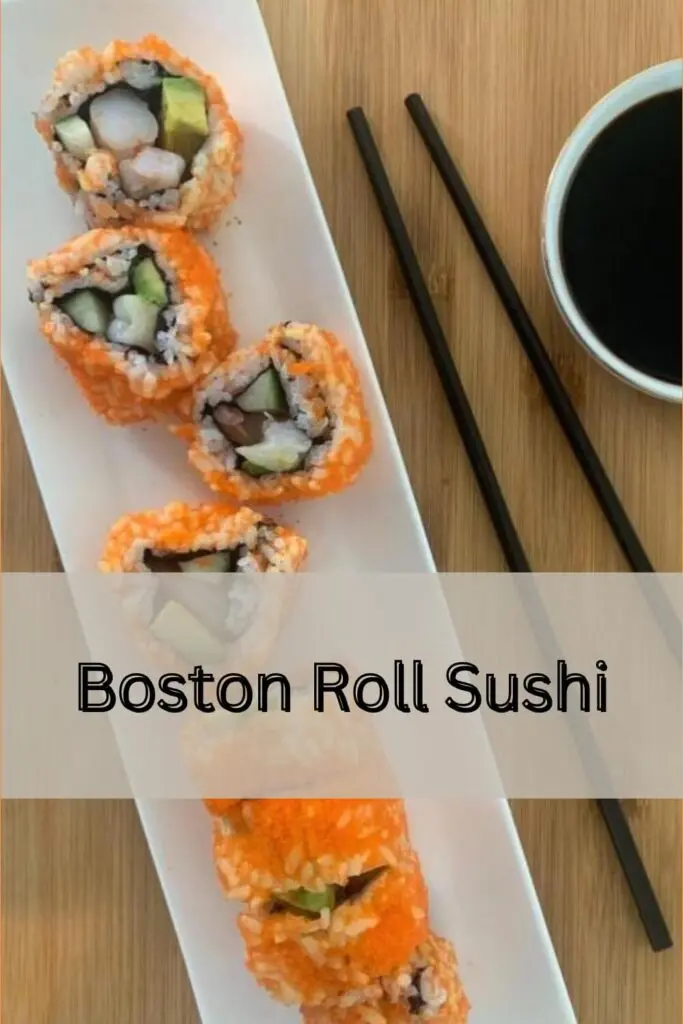
Table of Contents
What is a Boston Roll?
As can be guessed by the name, the Boston roll was invented in Boston and was adapted to Western tastes. Unlike many of its Japanese counterparts, Boston rolls contain no raw fish. Like California rolls, they are made with the rice on the outside of the nori sheet making them an inside out sushi roll, or uramaki roll.
They also have a signature bright orange or red color on the outside due to the a fish egg garnish called tobiko or masago. This also gives the roll a salty taste and a crunchy texture.
What is in Boston Rolls?
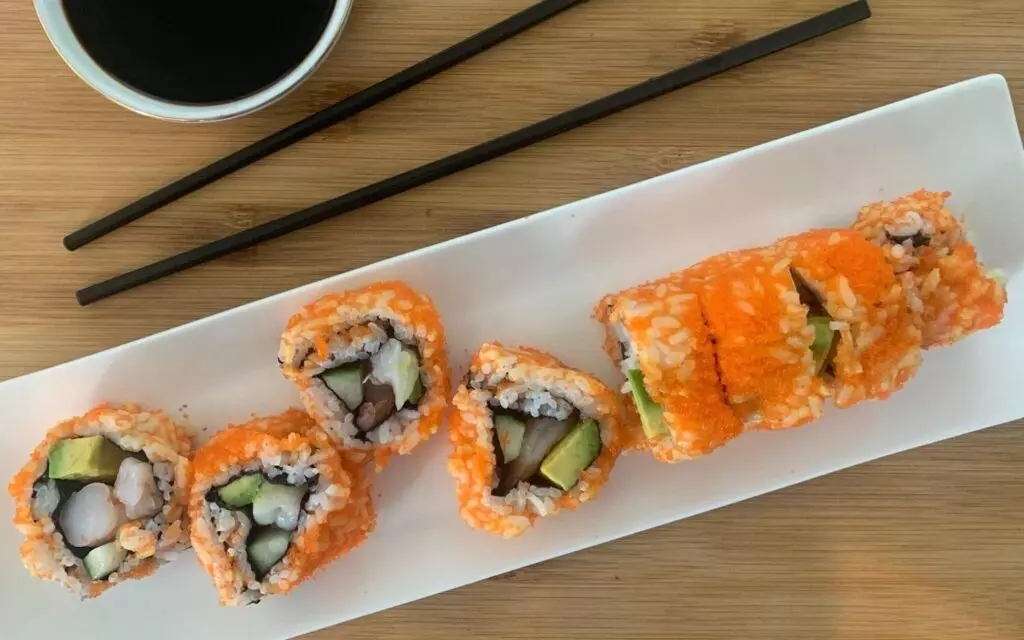
Like shrimp tempura rolls, Boston Rolls are made of shrimp, ripe avocado, and cucumber wrapped in nori wrap and sushi rice. However, there are a few key differences between the two rolls.
The first and most obvious difference is the shrimp in the Boston roll is poached where the shrimp in the tempura rolls are fried in a tempura batter.
Also, the rice on Boston rolls is topped with tobiko or masago, which are bright orange or red fish eggs called roe. This gives the roll a salty taste and a crunchy texture. Shrimp tempura rolls on the other hand sometimes are garnished with tobiko or masago but not always. They are sometimes topped with sesame seeds or sometimes contain no garnishment.
How to Control the Thickness of Your Sushi Roll
You can control how thick your sushi rolls are by how much of the nori sheet you use. This recipe uses the entire nori sheet which makes thicker rolls. If you like smaller rolls, you can cut the nori sheet in half. This will definitely make the roll thinner and easier to eat with chopsticks but it can be trickier to roll. You can also cut off the top 1/4 of the nori sheet to reduce the thickness of the roll depending on your preference.
How to Make Boston Rolls
Making Boston rolls, like most sushi, can be broken down into three parts: cooking the sushi rice, preparing the fillings, and assembling the roll. Below we will walk you through each step of the process:
Cook the Sushi Rice
1. To start, rinse 1 1/3 cups of sushi rice by placing it in a colander and running water through it until the water is clear. This will cook into 4 cups of cooked rice.
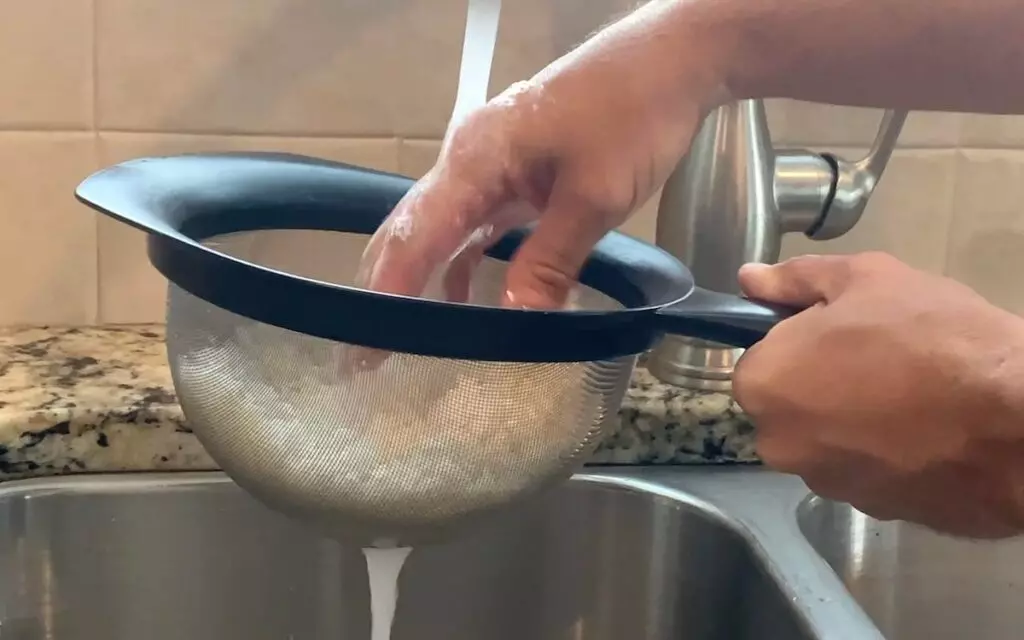
2. After the rice is rinsed, add it to a sauce pan with 1 2/3 cups of water (though look at the packaging of your rice to see the recommended amount of water).

3. Bring the water to a boil and then reduce the heat to low. Then cover and let the rice simmer for around 20 minutes, or until the water is absorbed and the rice is soft.
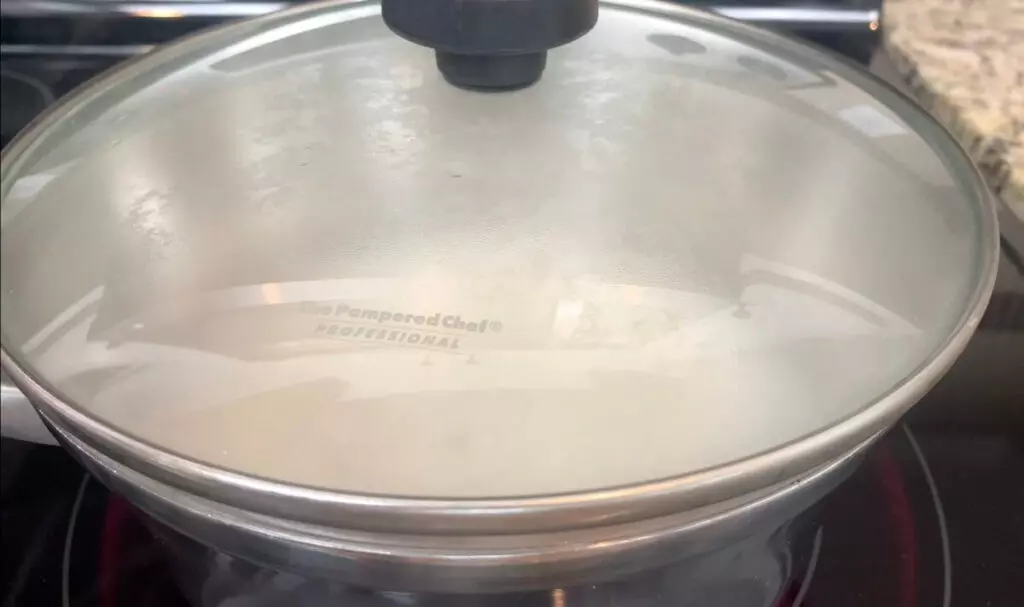
4. Remove the rice and scoop into a bowl or dish. I would line the dish with parchment paper prior to adding the rice to avoid sticking.
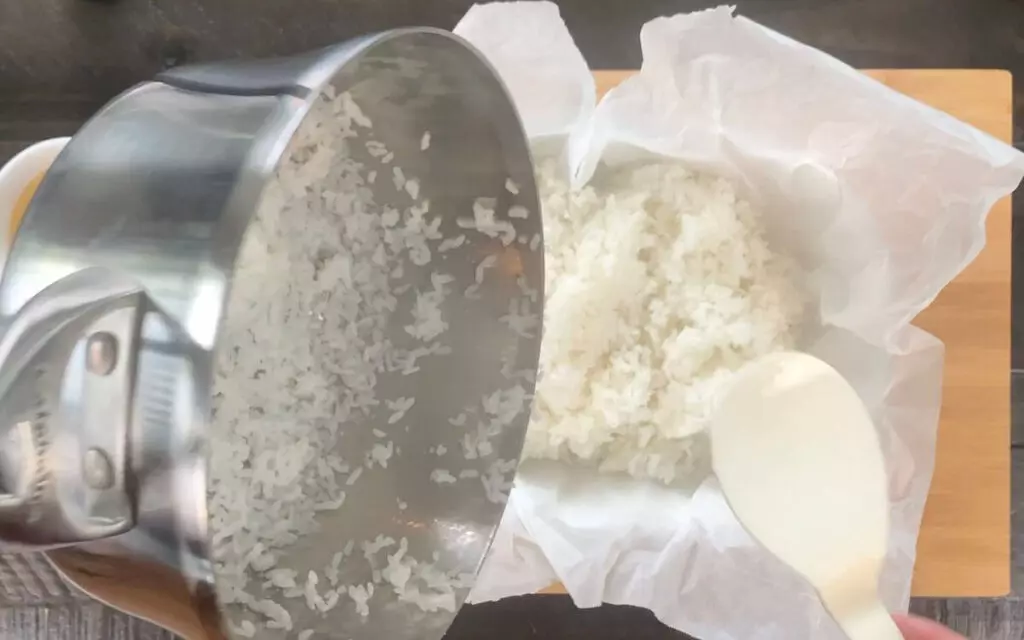
5. Mix 1/4 a cup of sushi vinegar into your rice. Stir until it has absorbed into the rice. Once cooled and fully absorbed, your rice is ready to roll!

Poach the Shrimp
1. Bring a pot of water to a boil and add a dash of salt to the water.
2. Once boiling add the shrimp and cook for 3-5 minutes.
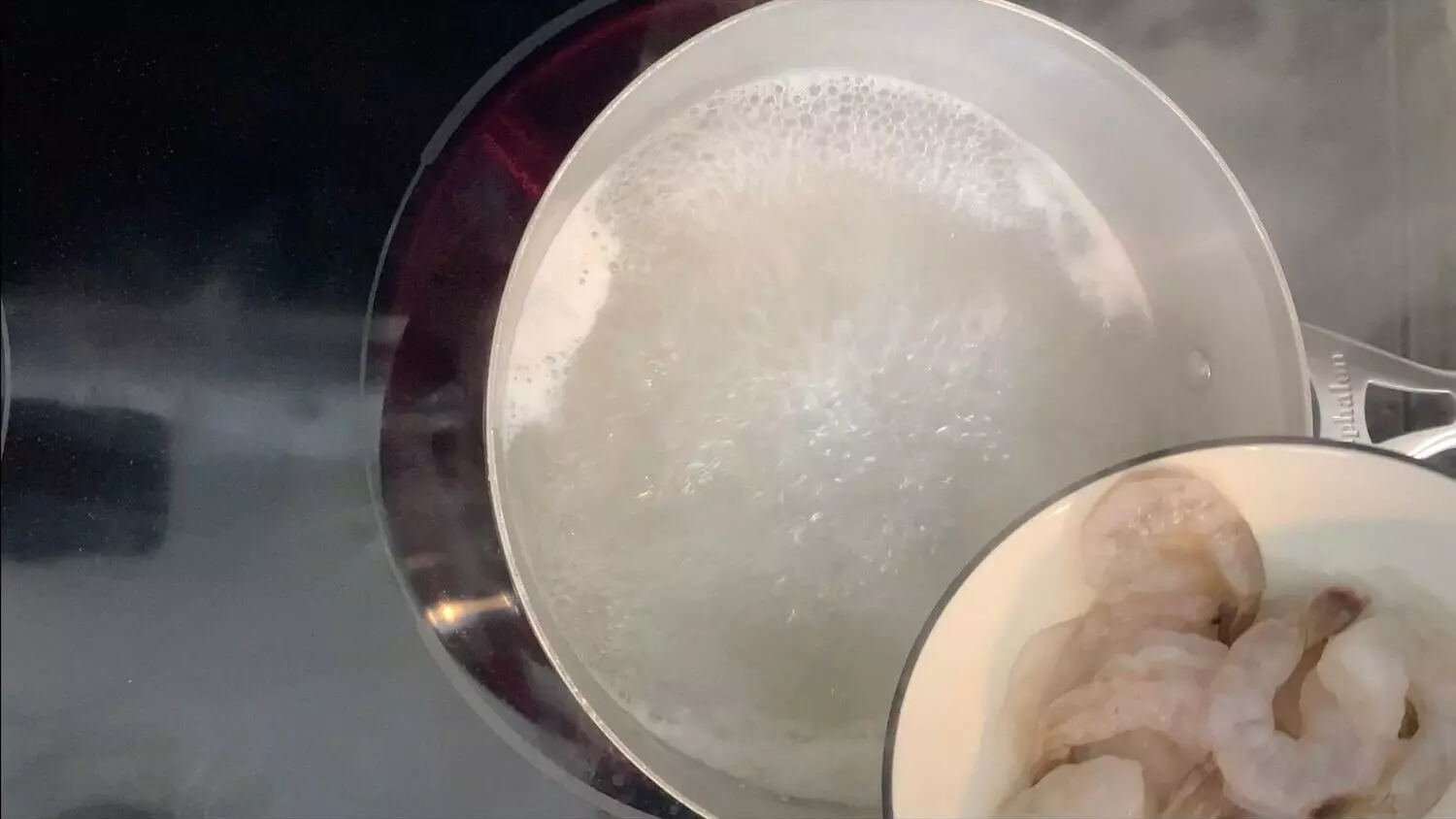
3. While the shrimp is cooking, prepare a bowl of ice water that is large enough for all the shrimp.
4. Once cooked, add the shrimp to your ice bowl and keep there until cool (usually a minute or two).
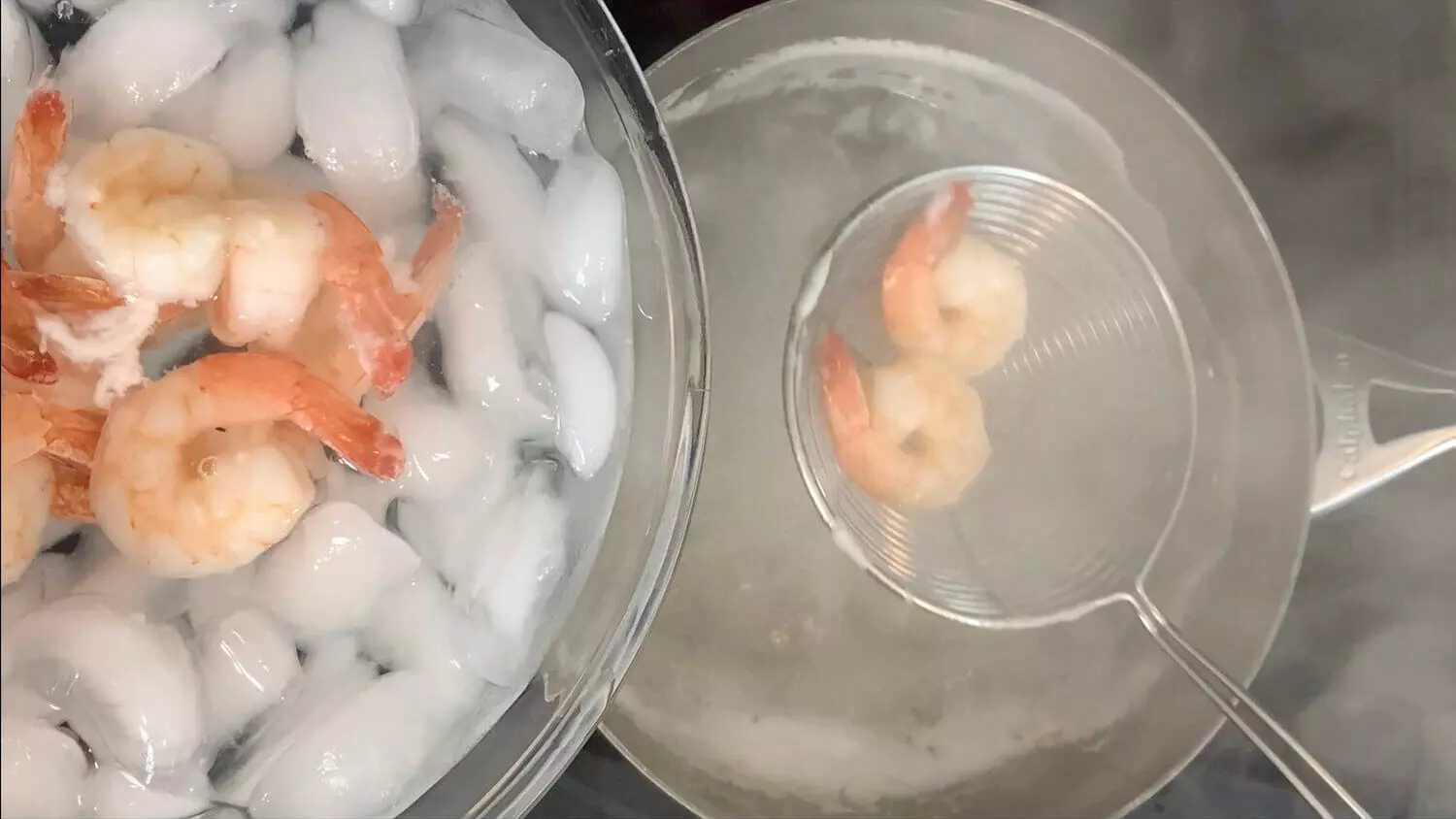
5. Once cool, take shrimp out of ice water, remove shells and tails, and devein.
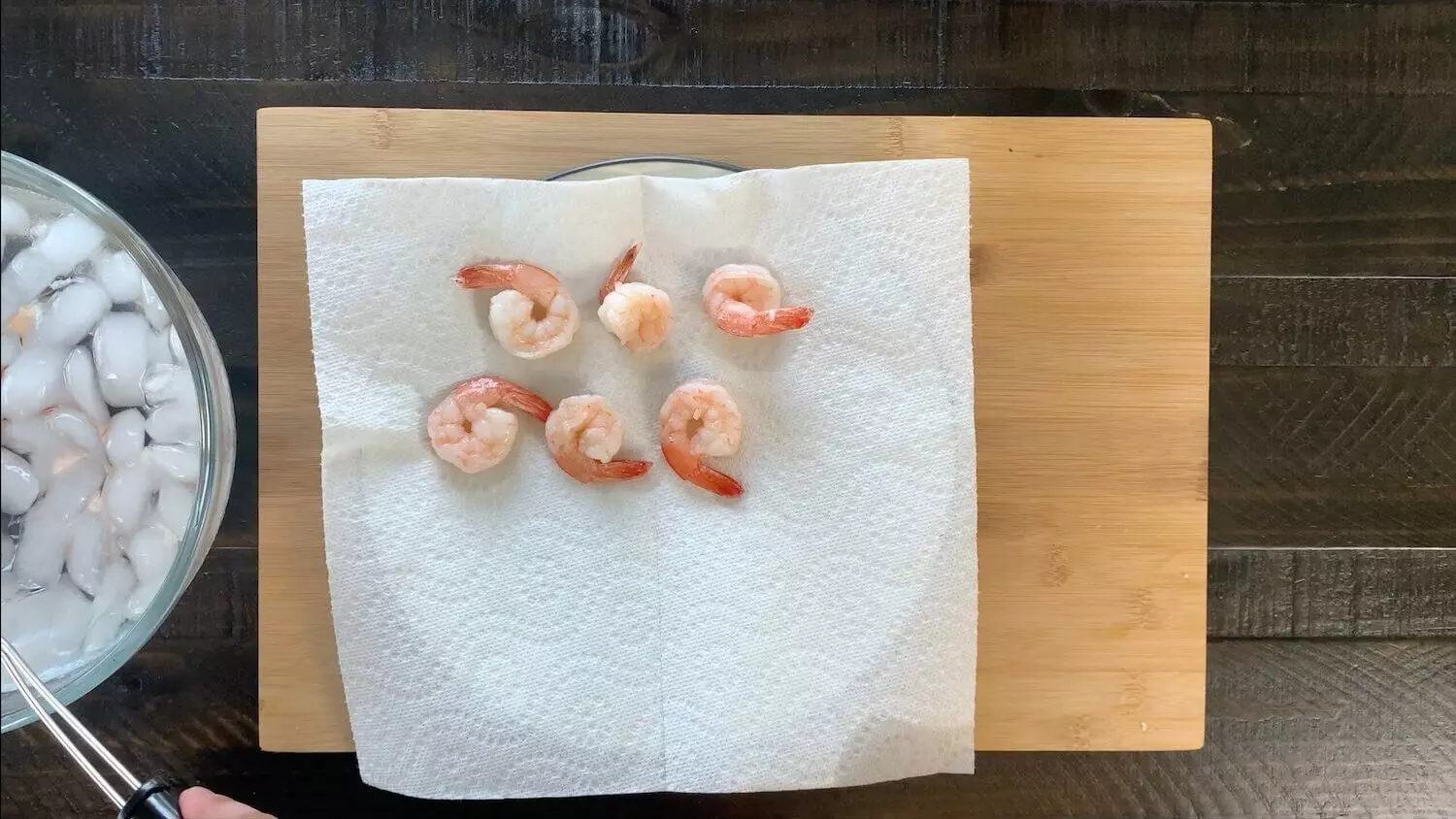
Assemble the Boston Rolls
Tip: Wet your hands with a bowl of water mixed with a splash of rice vinegar before working with sushi rice as it helps prevent the rice from sticking to your hands.
1. Prepare your ingredients: Start by cooking the rice and poaching the shrimp. Then cut the veggies. I would slice the avocado in half the long way, remove the seed, and then cut each half into 6 slices. Each whole avocado should yield around 12 slices. For the cucumbers, I would cut into strips that are as long as your nori sheet and also about a 1/8 inch in diameter.
2. Prepare your bamboo sushi mat: Now that you have prepared your ingredients, lay your bamboo sushi mat on the counter and cover in plastic wrap. This will help keep the rice from sticking to it.
3. Press rice onto nori sheets: Next, place the nori sheet onto the plastic wrap with the shiny side facing down. Then press around 1 cup of rice onto the nori sheet in an even layer.
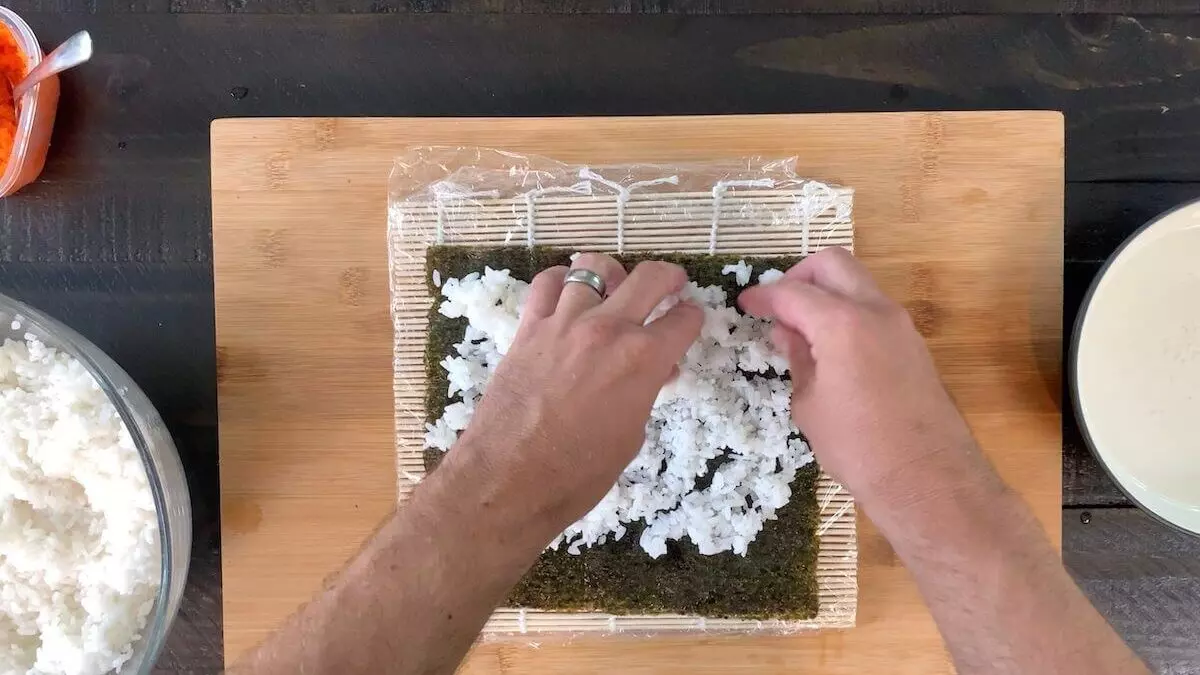
4. Add tobiko or masago: After the rice is pressed onto the nori sheet, add a thin layer of tobiko or masago to the top of the rice. Then flip the sheet over.
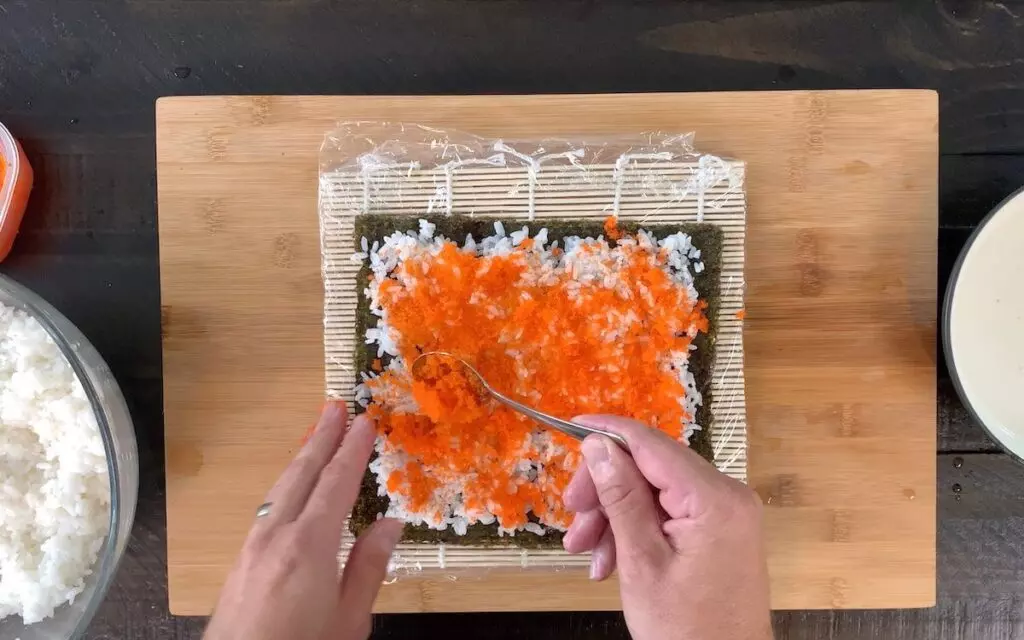
5. Add the filling: Add the avocado, shrimp, and cucumber sticks horizontally along the nori sheet. In general, I add 2-3 avocado slices, 1-2 cucumber sticks, and 4-5 shrimp pieces depending on the size of each ingredient and how everything fits.
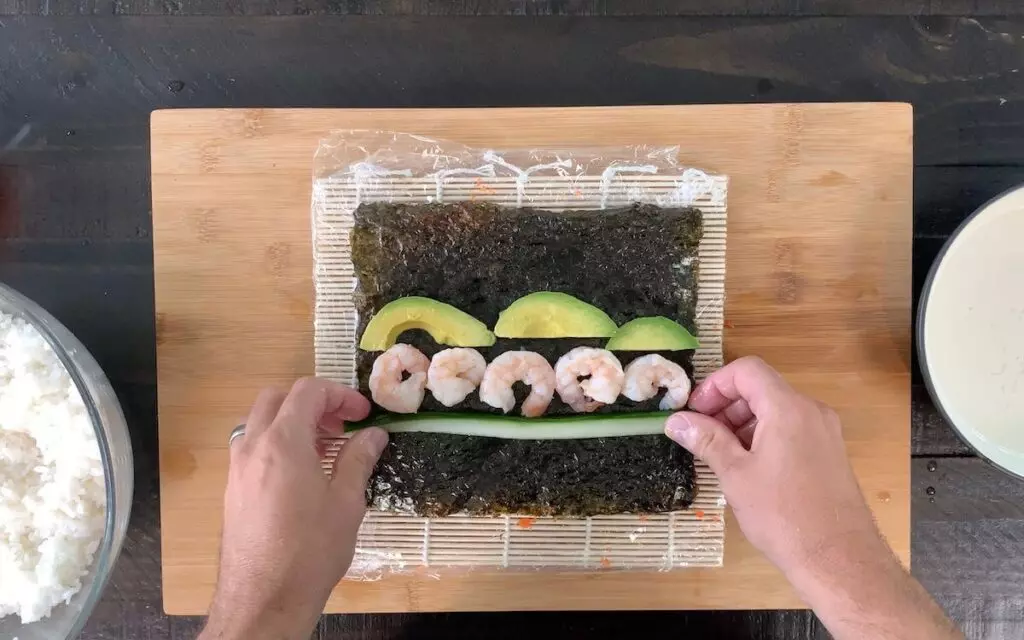
6. Roll the sushi: Use the bamboo sushi mat to fold your roll until it’s completely enclosed. Keep in mind that rolling sushi is an art that may take some practice so don’t get frustrated if it doesn’t look perfect your first time. It will get easier the more you do it.
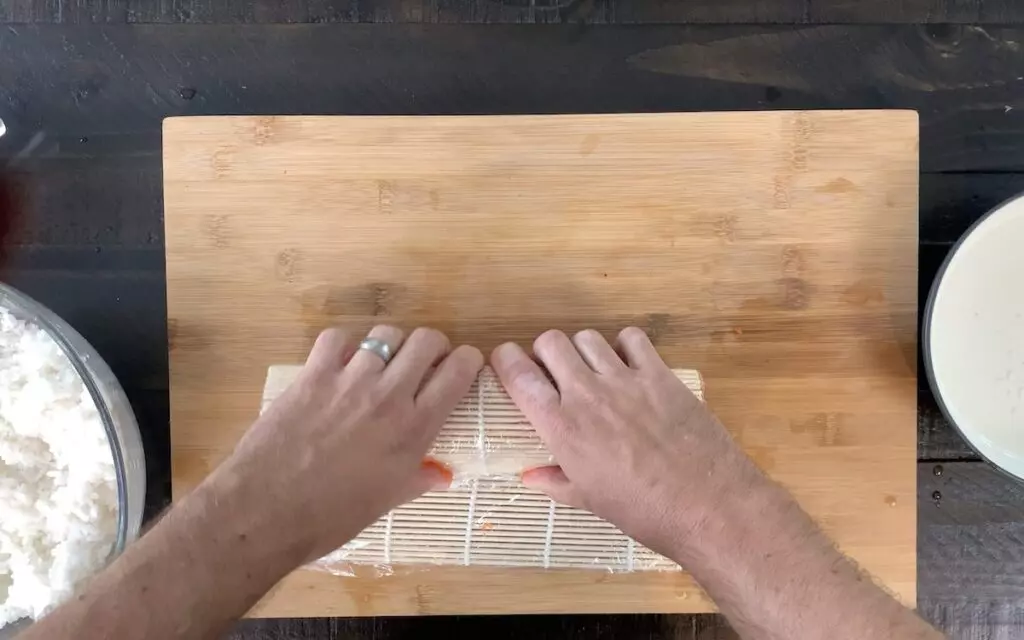
7. Cut the roll: Using a sharp knife, cut the roll into 8 pieces. I do this by first cutting the roll in half. Then cutting each half in half. Then cutting each fourth in half. Tip: Be sure to clean and wet the edge of your knife before cutting each roll.
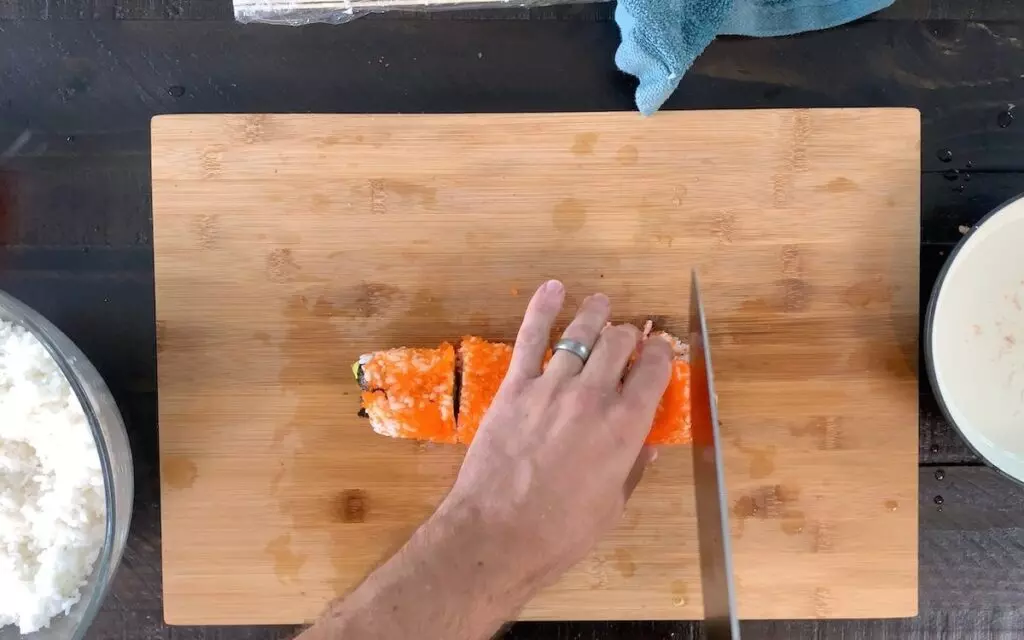
8. Serve and enjoy: I usually serve with soy sauce and wasabi. Sushi rolls are traditionally served with pickled ginger, or gari, as well.
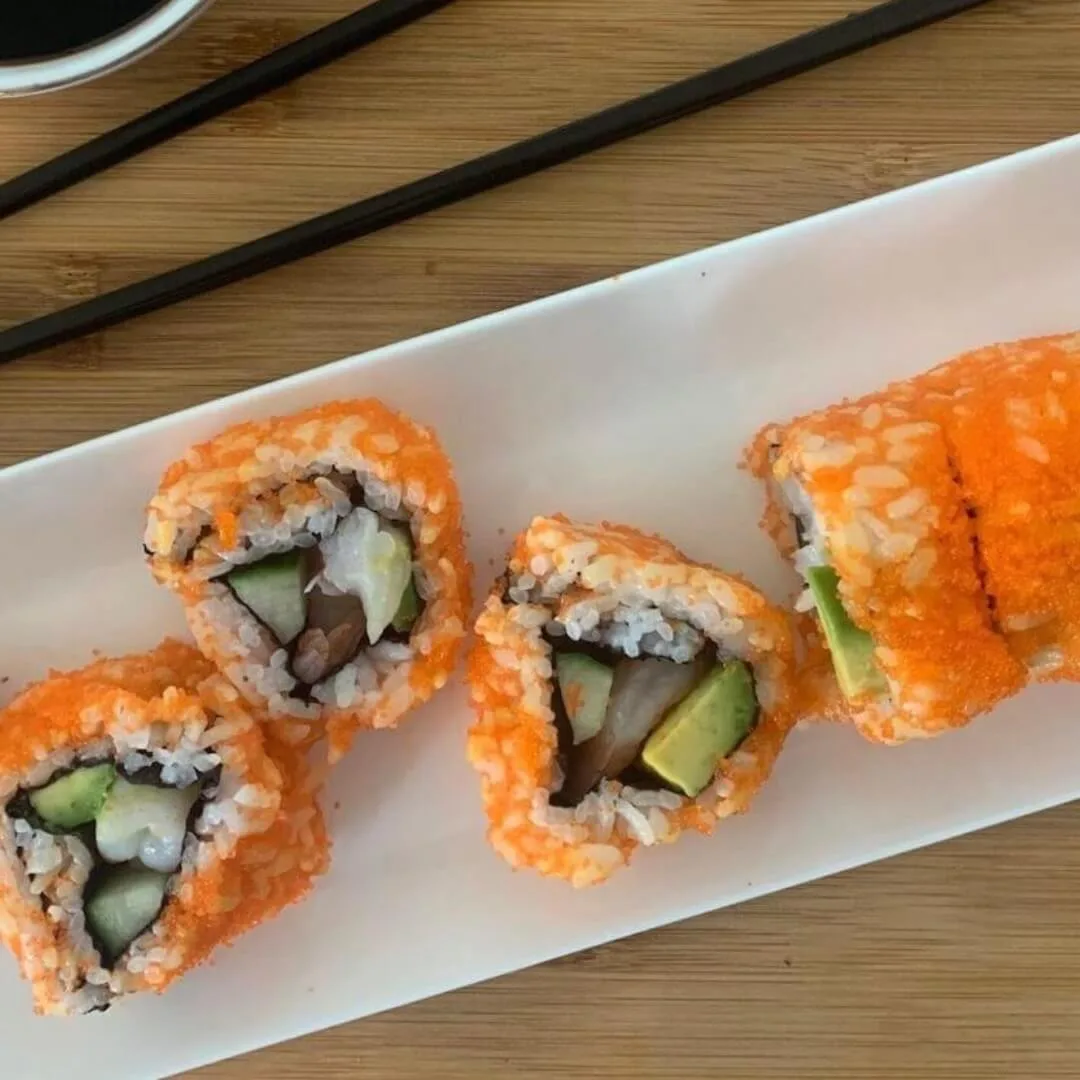
Boston Roll Recipe
Equipment
- 1 Bamboo Sushi Mat
- 1 Pot for cooking sushi rice
- 1 Pot for poaching shrimp
- 1 Sharp knife and cutting board
Ingredients
- 1 1/3 cups Sushi Rice dried, will cook to 4 cups
- 1/4 cup Sushi Vinegar
- 8 tbsp Tobiko or Masago
- 4 Nori Sheets
- 1 Ripe Avocado
- 20 Shrimp Medium size
- 1 Cucumber Sliced into 1/8 sticks
- Lemon Juice
Instructions
Cook Sushi Rice
- Rinse 1 1/3 cup of sushi rice by placing it in a colander and running water through it until the water is clear.
- After the rice is rinsed, add it to a sauce pan with 1 2/3 cups of water.
- Bring the water to a boil and then reduce the heat to low. Cover and let the rice simmer for 20 to 30 minutes, or until the water is absorbed and the rice is soft.
- Remove the rice and place into a bowl or dish and let cool. I would line the dish with parchment paper prior to adding the rice to avoid sticking.
- Mix 1/4 cup of sushi vinegar into your rice. Stir until it has absorbed into the rice. Once cooled and fully absorbed, your rice is ready to roll!
Poach Shrimp
- Bring a pot of water to a boil and add a dash of salt to the water.
- Once boiling, add the shrimp and cook for 3-5 minutes.
- While the shrimp is cooking, prepare a bowl of ice water large enough for all the shrimp.
- Once cooked, remove the shrimp from the boiling water and add to your ice bowl and keep there until cool (usually a minute or two).
- Once cool, take shrimp out of ice water, remove shells and tails, and devein.
Roll the Boston Rolls
- Cut the avocado and cucumber: First, slice the avocado in half the long way. Remove the seed and cut each half into 6 slices. Each whole avocado should yield around 12 slices. I would also drizzle lemon juice over the avocado after cutting to prevent it from browning in your sushi roll. Finally, cut the cucumbers into strips that are as long as your nori wrapper and about 1/8 inch thick.
- Prepare your bamboo sushi mat: Cover your bamboo sushi mat with plastic wrap. This will help keep the rice from sticking to it.
- Press rice onto nori sheets: Next, place the nori sheet onto the plastic wrap with the shiny side facing down. Then press around 1 cup of rice onto the nori sheet in an even layer. Tip: Wet your hands prior to handling the rice to prevent the rice from sticking to your hands.
- Add tobiko or masago: After the rice is pressed onto the nori sheet, add a thin layer of tobiko or masago to the top of the rice. Then flip the sheet over so the rice is facing down.
- Add the filling: Add the avocado slices, shrimp and cucumber sticks horizontally along the nori sheet. In general, I add 2-3 avocado slices, 1-2 cucumber sticks, and 4-5 pieces of shrimp depending on the size of each ingredient and how everything fits.
- Roll the sushi: Use the bamboo sushi mat to fold your roll until it is completely enclosed. Once the rice is making contact with the nori roll, pull back the sushi mat so it doesn't get caught in the sushi. Still using the sushi mat as your guide, finish rolling until the roll is completely wrapped. Then wrap the sushi mat around the roll and gently press, tightening the roll together.Keep in mind that rolling sushi is an art that may take some practice so don’t get frustrated if it doesn’t look perfect your first time. It will get easier the more you do it.
- Cut the roll: Using a sharp knife, cut the roll into 8 pieces. I do this by first cutting the roll in half. Then cutting each half in half. Then cutting each fourth in half. Tip: Be sure to clean and wet the edge of your knife before cutting each roll.
- Serve and enjoy: I usually serve with soy sauce and wasabi. Sushi rolls are traditionally served with pickled ginger, gari, as well.
Video
Notes
Nutrition
Frequently Asked Questions
Is a Boston roll gluten free?
Yes, Boston rolls are almost always naturally gluten-free. However, the soy sauce it is often served with often contains gluten unless you specifically request a gluten-free soy sauce.
What’s the difference between a Boston roll and a California roll?
The California roll and Boston roll are very similar in that neither contain raw fish. Both contain avocado and cucumber and both have the rice on the outside making them uramaki rolls. The difference is a California roll contains crab (often imitation) while a Boston roll contains cooked shrimp.
What’s an inside out sushi roll?
A roll that has the rice on the outside of the nori sheet, such as the California Roll or Boston roll, is considered an inside out sushi roll. Another name for this is an uramaki roll.
Final Thoughts on Boston Rolls
Boston rolls were one of the first rolls I’ve ever eaten and prepared. Since it contains ingredients commonly prepared in Western kitchens, it’s a great roll to begin you sushi journey, whether trying new rolls to eat or prepare! Happy cooking!
Also check out other great articles below:
Sashimi vs. Sushi: What’s the Difference?
The 15 Best Chickpea Substitutes
Also, for more great videos subscribe to our YouTube Channel.
